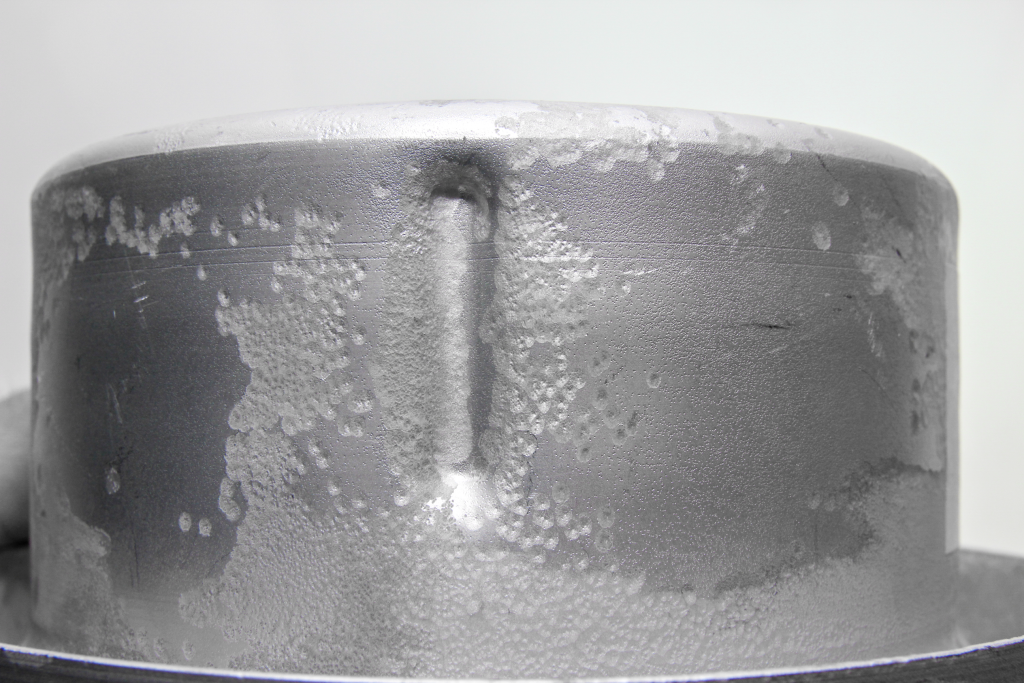The pre-treatment of aluminium surfaces in alkaline E6 long-term pickling processes produces fine-matt, very decorative surfaces. However, this appearance is negatively affected by the accumulation of certain contaminants to such an extent that the anodised product is often not saleable and has to be reworked.
In addition to the known zinc impurities that lead to coarse grain formation in the alkaline E6 – long-term pickling bath, other impurities should also be taken into account.
Tin compounds can also cause problems if a certain content is exceeded. Even though the maximum contents may vary due to the respective pickling bath composition, Alufinish has defined a guideline value of a maximum of 100 mg/L Sn based on practical results.
If the content is above 100 milligrams of tin (Sn) per litre of pickling bath, then in addition to a lack of matt finish, the forming of corrosion-like depressions in the material can also occur, which are visible in the form of small “hollows” on the surface. Depending on the higher concentration of tin in the pickling bath, the effect of this disturbance is more pronounced .

How does the tin get into the alkaline E6 – long-life pickle?
If electrolytically bronze or black coloured anodised surfaces have to be reworked due to faulty execution, they must first be de-anodised in order to remove the existing oxide layer (+ colouring) before the new pre-treatment. Alkaline E0 pickles are usually used for this purpose. However, if these are not available for various reasons, the anodising company usually only has the option of stripping in the existing alkaline E6 long-term pickle. Depending on the quantity of the surfaces to be pickled, more or less tin gets into the corresponding pickling bath, accumulates there and finally leads to the mentioned disturbance. The disturbance can also be caused by E0 pickles that are heavily contaminated with tin, if corresponding bath portions are then used to fill up an E6 pickle.

How can you prevent and solve the problem?
To avoid the problem, corresponding faulty batches should therefore be de-anodised in a separate E0 pickling bath and this contaminated bath solution should not be used to fill up an E6 pickling bath.
Once the problem has been identified, it can be counteracted with sufficient additions of sodium sulphide. However, a rest period (without further pickling, e.g. at the weekend) must be observed. Otherwise, the addition of sodium sulphide is usually ineffective.
